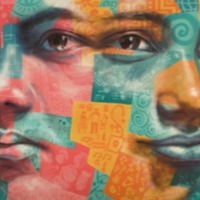
Rita
Rita was drugged and trafficked from Nepal into India in 1998 at the age of 19. She was eventually helped by the NGO “Maiti Nepal.” Here she narrates a series of experiences that are rooted in her identity as a woman. The traffickers tricked her by explaining that they needed her to help smuggle diamonds—because “girls were not checked as thoroughly as men” by border guards. One of the first incidents in India is the replacement of her trousers for a long skirt. She notes that when women are enslaved they are “made ‘sisters.’” She goes on to observe the psychology of women who refuse to leave because they “will not be accepted by society.” She describes the horror of public questioning about her experiences in sex slavery. And she tells the stories of two other women—Vidhya and Maili. Thousands of Nepali women and children are trafficked every year across the border into Indian brothels, and Nepal has an unknown number of internal sex trafficking victims as well. In response to a dowry practice, where they must offer gifts that could be worth several years’ income, some parents sell their daughters rather than have them married. Other women are drugged and taken across the border, like Rita. Once enslaved, Nepali girls and women are more likely to be arrested than rescued by the police, and most Nepalese victims never leave India, even after liberation. Those who do are often shunned by their families and remain in Kathmandu at shelters. Another aspect of this enslavement is HIV and AIDS. Some 50 percent of those who return to Nepal are HIV-positive, and Rita makes reference to these “girls with AIDS.”

Ragaa
Egypt is a transit country for women trafficked from sub-Saharan Africa, Eastern Europe, and the former Soviet Union to Europe and Israel for sexual exploitation. Internal trafficking occurs as well: Ragaa is an Egyptian woman trafficked into sex slavery within Egypt in 1995, and children are trafficked from rural areas to work as laborers in the agriculture industry. Each year over one million children between the ages of seven and 12 work 11 hours a day for Egypt’s agricultural cooperatives on cotton pest management. They face routine beatings by their foremen, and exposure to heat and pesticides.Ragaa’s experience included the offer of a “pleasure marriage,” which is a temporary arrangement to permit sexual intercourse, and a “temporary marriage,” because brothels are forbidden by law and Islamic Sharia in Egypt. Then she explains that her escape brought no sense that the experience was over. The problem of freedom after bondage was an ongoing fear of her traffickers.